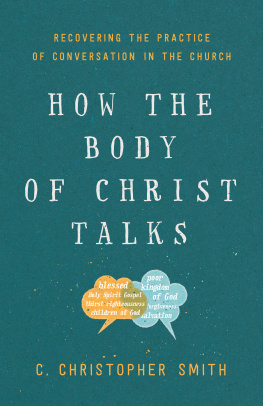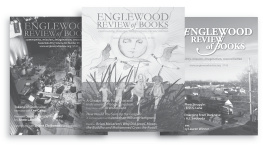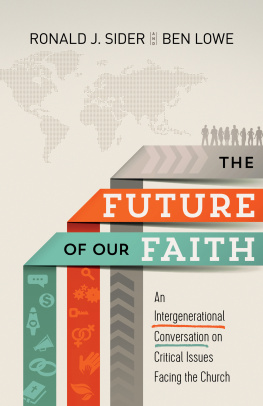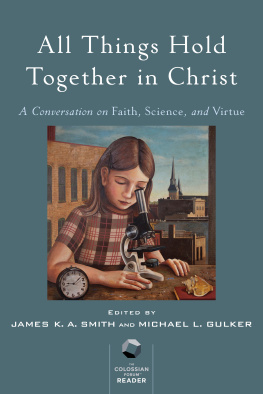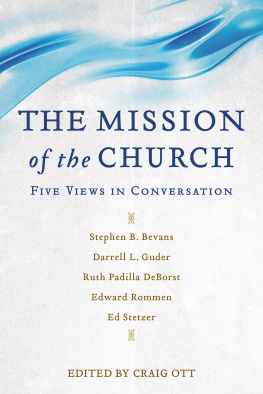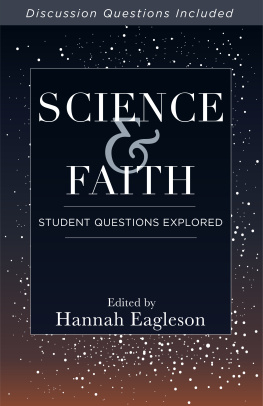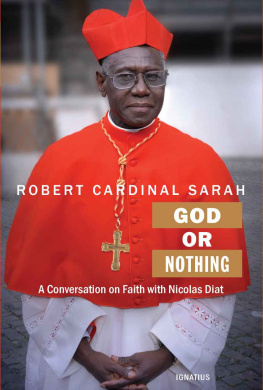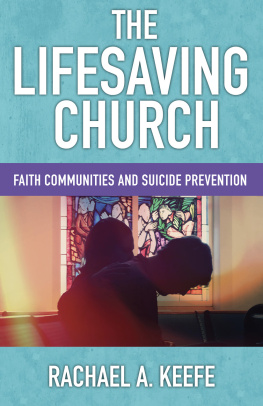Copyright Page
2019 by C. Christopher Smith
Published by Brazos Press
a division of Baker Publishing Group
PO Box 6287, Grand Rapids, MI 49516-6287
www.brazospress.com
Ebook edition created 2019
All rights reserved. No part of this publication may be reproduced, stored in a retrieval system, or transmitted in any form or by any meansfor example, electronic, photocopy, recordingwithout the prior written permission of the publisher. The only exception is brief quotations in printed reviews.
Library of Congress Cataloging-in-Publication Data is on file at the Library of Congress, Washington, DC.
ISBN 978-1-4934-1705-6
Unless otherwise noted, Scripture quotations are from the New Revised Standard Version of the Bible, copyright 1989, by the Division of Christian Education of the National Council of the Churches of Christ in the United States of America. Used by permission. All rights reserved.
Scripture quotations labeled NASB are from the New American Standard Bible (NASB), copyright 1960, 1962, 1963, 1968, 1971, 1972, 1973, 1975, 1977, 1995 by The Lockman Foundation. Used by permission. www.Lockman.org
Epigraph
That peoples can no longer carry on authentic dialogue with one another is not only the most acute symptom of the pathology of our time, it is also that which most urgently makes a demand of us.
Martin Buber, Pointing the Way
The living human community that language creates involves living human bodies. We need to talk together , speaker and hearer here, now. We know that. We feel it. We feel the absence of it.
Speech connects us so immediately and vitally because it is a physical, bodily process, to begin with.
Ursula K. Le Guin, The Wave in the Mind
Contents
Cover
Half Title Page
Title Page
Copyright Page
Epigraph
Introduction: We Are Conversational Bodies
1. Orienting Ourselves for the Journey: Theological Roots of Conversation
Part 1: Setting Out on the Journey
2. Learning the Dynamics of Conversation
3. What Will We Talk About?
4. The Healing Potential of Conversational Methods
Part 2: A Spirituality for the Journey
5. Conversation as a Prayerful Way of Being
6. Abiding in the Messiness of Life
7. Preparing Our Whole Selves for Conversation
Part 3: Sustaining the Journey
8. Cultivating a Sense of Mission and Identity
9. Sustaining Conversation through Conflict
Conclusion: Conversational Bodies Bearing Witness
Acknowledgments
Appendix A: Sample Conversational Ground Rules
Appendix B: Additional Resources on Conversational Methods
Appendix C: Finding Common Ground in Conversations on Sexuality
Notes
About the Author
Back Ad
Back Cover
Part 1: Setting Out on the Journey
Part 2: A Spirituality for the Journey
Part 3: Sustaining the Journey
Appendix C
Finding Common Ground in Conversations on Sexuality
Conversations about human sexuality and marriage are some of the most divisive that churches face today. In these conversations, we would do well to remind ourselves often of our unity in Christ and to find common ground on which those of diverse perspectives can agree. One of the earliest things that Grandview Calvary Baptist Church (Vancouver, BC) did in its conversations on sexuality was to create the following statement of common ground. I have included it here to stir our imaginations about how such conversations might move forward.
Common Ground to Stand On
In our discussion and discernment between 2009 and 2010, we gained some common ground. While we recognize that not every person in the church was able to adhere to the following beliefs, the council (pastors and deacons) at that time and the committee holding this process sought to develop and affirm some common ground that we could build on in our sexual ethics and practice.
Here are some truths we seek to affirm:
- We are all created in the image of God, giving each of us inherent value and dignity.
- Our sexuality is an integral part of our bodies and personhood. While our culture can reduce sexuality to having sex, sexuality has to do with how we relate to the world, with our longing for intimacy and being known, and with our need for human companionship.
- Sexual desires are complex in origin and experience. A homosexual orientation may occur as a result of a combination of genes, prenatal hormones, and early childhood environment (as well as wounding in some cases). We acknowledge that discussions concerning the complex origin of sexual desires are sometimes hurtful and often unprofitable. We seek to be diligent in not judging or excluding one another based on who we desire or are attracted toward.
- The historic teaching of the church is that the act of genital sex is ideally held within the covenant relationship of marriage between a man and a woman. The act of covenant is given to us in order to protect us from harm, in order to nurture bonds that take us deeper into the meaning of Gods love, and in order to create a family where others can be welcomed and nurtured. A healthy sexuality is expressed in celibacy or covenantal commitment and in a community of love and accountability.
- All of us are tainted by the fallenness of separation and resistance to God and Gods ways, making us less than whole in our sexuality. Heterosexual and homosexual people are both tainted by this fallenness. For example, there is no evidence that homosexual people have a higher risk for abusing children than heterosexual people do. We live in a culture that idolizes autonomy (doing our own thing apart from any authority or guide) and this plays itself out in our cultures resistance to the Biblical aims and boundaries around sex.
- It is very difficult to change ones orientation from homosexual to heterosexual.
- All those who respond to Gods love in Christ are being redeemed and restored. Because the fullness of that restoration awaits the new creation, we live with imperfection and loss as well as joy and hope.
- Our theological views and commitments around same-sex attraction and sexuality are important but not part of the essential teachings of the church (such as the divinity and humanity of Christ, the resurrection of Jesus, the hope of a new world, etc.).
Notes
Introduction: We Are Conversational Bodies
. The State of the Church 2016, Barna Group, September 15, 2016, https://www.barna.com/research/state-church-2016.
. W. Daniel Hillis, Edge Master Class 2010: W. Daniel Hillis on Cancering, Edge, December 27, 2010, https://www.edge.org/event/edge-master-class-2010-w-daniel-hillis-on-cancering.
. Or perhaps, in cases such as in vitro fertilization, this intimate conversation would include others beyond our biological mother and father.
. Robert Putnam, Bowling Alone: The Collapse and Revival of American Community (New York: Simon & Schuster, 2000), 27.
. Bill Bishop, The Big Sort: Why the Clustering of Like-Minded America Is Tearing Us Apart (New York: Houghton Mifflin, 2008).
. Bren Brown, Braving the Wilderness: The Quest for True Belonging and the Courage to Stand Alone (New York: Random House, 2017), 27.
Chapter 1: Orienting Ourselves for the Journey
. Drawing on both the Nicene and Athanasian Creeds, philosopher Michael Rea articulates the three central, orthodox tenets of the doctrine of the Trinity: (1) There is exactly one God, whom the church has referred to historically as Father; (2) Father, Son, and Holy Spirit are not identical; (3) Father, Son, and Holy Spirit are of one substance (consubstantial). See Michael Rea, The Trinity, in The Oxford Handbook of Philosophical Theology , ed. Thomas P. Flint and Michael Rea (Oxford: Oxford University Press, 2009), 405.

